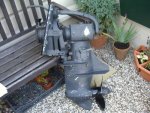Kawasaki
Well-known member
If you are going to limit yourself to boats in Suffolk good luck.
'Boat Hunting' I have always found good fun. Half the places I have viewed boats I may never have seen!
Good Spot the Nimbus Jez but of course you know I am biased!!



